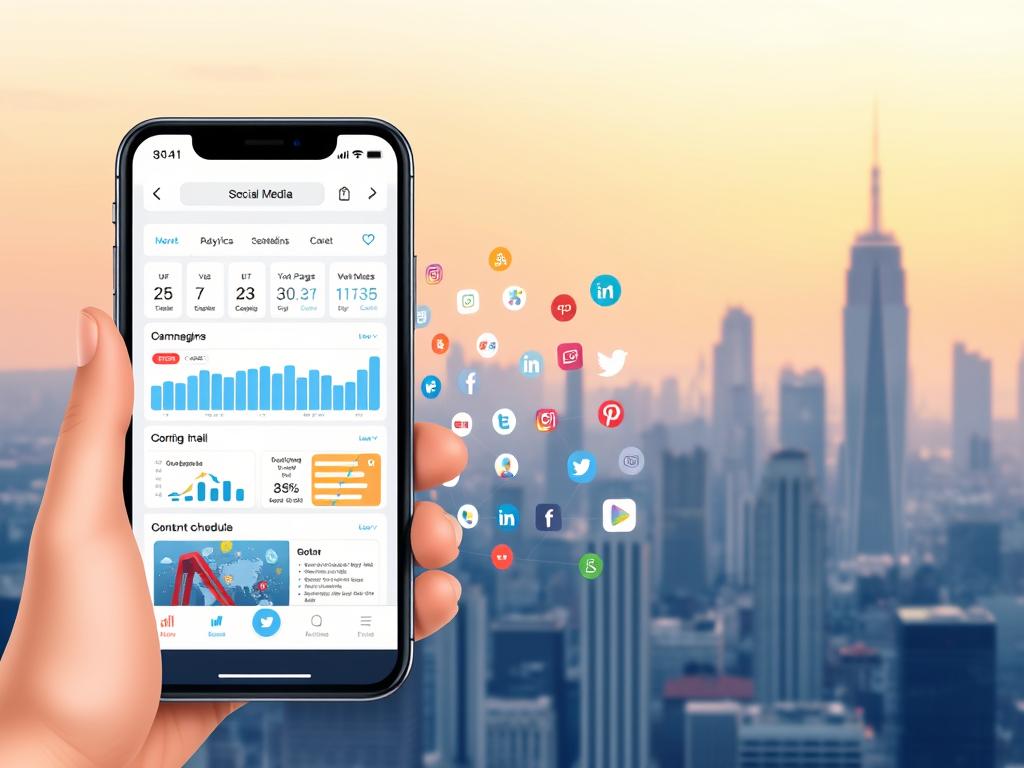Did you know 76% of marketers now plan strategies around platform features that don’t exist yet? According to surveys of 240 creators and strategists, professionals are bracing for over 35 major shifts in how audiences connect online by 2025. The digital landscape isn’t just changing—it’s accelerating.
Platforms are evolving faster than ever. Algorithms prioritize meaningful interactions over vanity metrics. Content formats blend AI-generated material with human creativity. Wearable tech integration and immersive storytelling redefine what “engagement” means.
Staying relevant requires more than reactive adjustments. Industry leaders emphasize the importance of proactive frameworks that strike a balance between trend adoption and brand authenticity. Data shows that creators are increasingly focusing on niche communities rather than mass appeal.
Success hinges on understanding both current user behavior and emerging technologies. From algorithm updates to augmented reality filters, every shift impacts how brands tell stories. The challenge? Building strategies that are flexible enough to adapt yet consistent enough to maintain trust.
Key Takeaways – Future of Social Media
- Marketers must prepare for 35+ platform changes by 2025
- Algorithms now favor genuine connections over likes
- AI and wearables create new engagement opportunities
- 240 professionals prioritize niche community building
- Balancing trends with authenticity drives success
Exploring the Evolution of Social Media Trends
The Future of Social Media: From Bulletin Boards to Bite-Sized Videos, Online Interaction Has Undergone a Dramatic Transformation. Early platforms, such as MySpace and Facebook, began with text-heavy profiles. Mobile advancements then shifted focus to visual storytelling, with Instagram’s 2010 launch accelerating photo-sharing trends.
Historical Shifts and Milestones
The progression from text to video wasn’t accidental. Faster mobile networks eliminated buffering, making TikTok-style content viable. As Meta CEO Mark Zuckerberg notes:
“Interactive experiences will dominate by 2030, just as video overtook static posts.”
Key developments include:
- 2004: Facebook prioritizes user-generated text content
- 2012: Instagram’s filters revolutionize mobile photography
- 2020: TikTok’s algorithm reshapes video consumption habits
Impact of Rapid Platform Changes
Algorithm updates frequently upend marketing strategies. A 2023 study found 68% of brands had campaigns disrupted by Instagram’s shift to Reels. Teams now face dual challenges:
- Maintaining brand voice across formats
- Quickly adopting features like LinkedIn’s collaborative articles
These changes also affect performance tracking. Engagement metrics have evolved from simple likes to more complex measures, such as “save rates” and audio clip interactions.
Navigating the Future of Social Media: Trends and Predictions
Platform priorities are shifting faster than brands can update their playbooks. Recent data reveals Instagram remains marketers’ top choice, with 44% planning major investments through 2025. LinkedIn’s 20% adoption rate signals the growing influence of B2B, while TikTok and YouTube battle for the remaining attention.
Anticipated Platform Innovations
Three key developments dominate platform roadmaps:
- Interactive live streams with real-time product tagging
- Co-creation tools letting fans remix branded content
- AR filters syncing with wearable devices
| Platform | 2025 Priority | Key Focus Area |
|---|---|---|
| 44% | Shoppable AR experiences | |
| 20% | Employee advocacy tools | |
| TikTok | 18% | Interactive video templates |
| YouTube | 11% | AI-generated video summaries |
Shifts in Consumer Behavior and Engagement
User trust patterns reveal surprising insights. 30% of consumers now trust influencers more than last year, especially Millennials. This shift demands authentic storytelling over polished ads.
Emerging engagement metrics prioritize:
- Comment depth over like counts
- Content saves versus shares
- Collaboration requests on posts
Content Innovation and Storytelling in the Digital Age
As audiences scroll faster, brands rush to craft content that stops thumbs mid-scroll. Nearly half of marketers (47%) now prioritize video under 60 seconds, according to 2025 strategy surveys. This shift reflects both algorithmic demands and shrinking attention spans, but also reveals opportunities for deeper connections.
The Rise of Video, Carousels, and Episodic Content
Short-form video dominates strategies because it aligns with platform algorithms and viewer habits. TikTok’s introduction of photo carousels and Instagram’s 20-slide expansion prove that content formats are blending. As one creative director notes:
“Carousels let us teach complex topics through bite-sized steps – viewers swipe to learn.”
Episodic storytelling thrives as brands mimic creator-led series. A skincare company saw 38% higher engagement after launching weekly “Skincare Myth” explainers. Mid-form videos (60-90 seconds) strike a balance – long enough for narratives, short enough for feeds.
Key developments reshaping digital strategies:
- Interactive polls in carousels boost saves by 22%
- Series finales drive 3x more profile visits
- 60-second videos retain 89% of viewers vs. 76% for longer formats
These innovations transform passive viewers into participants. Brands now design content that invites remixes or user-generated endings – turning consumption into collaboration.
Social Media Strategy and Digital Marketing Insights
Marketers face a pivotal challenge: crafting strategies that strike a balance between technical precision and human connection. Three pillars now define success—SEO-driven content, authentic collaborations, and lightning-fast responsiveness.

SEO Integration and Data-Driven Approaches
Platforms now reward keyword-rich captions over hashtag spam. Instagram’s removal of hashtag following pushed 72% of brands to prioritize SEO tactics in 2024. As digital strategist Lena Torres explains:
“Captions now function as mini-search engines. Every sentence must answer audience questions while containing strategic keywords.”
| Strategy | Impact | Key Tools |
|---|---|---|
| SEO Optimization | 41% higher content visibility | Semrush, Google Trends |
| Predictive Analytics | 33% better engagement forecasts | Tableau, Hootsuite Insights |
| Cross-Platform Syncing | 28% faster campaign adjustments | Sprout Social, HubSpot |
Influencer Collaborations and UGC Trends
B2B companies now sign 18-month contracts with creators, transforming them into brand advisors. This shift drives 56% higher trust scores compared to one-off posts.
User-generated content dominates feeds—63% of consumers trust peer reviews over ads. Brands like Glossier see 3x more saves on UGC carousels versus polished campaigns.
Real-Time Engagement and Adaptive Messaging
Teams now monitor trending audio clips and viral memes, responding within 2-4 hours. A sports brand gained 12K followers by collaborating with a creator during their live-streamed product launch.
Adaptive content tools enable marketers to tailor messaging for different regions without compromising their brand voice. As one marketing director notes:
“Our Denver team adjusts headlines hourly based on real-time sentiment analysis from Texas to Tokyo.”
The Impact of AI and Emerging Technologies on Social Media
Social teams spend 63% of their time on repetitive tasks instead of creative work. This reality drives rapid adoption of AI tools and wearable technology, reshaping how brands connect with audiences.
AI-Powered Content Creation and Predictive Analytics
AI now handles scheduling, caption writing, and basic video editing. Tools like Jasper and Lately save teams 14 hours weekly. However, 47% of users hesitate to buy from brands that use machine-generated content.
Predictive analytics helps solve this trust gap. Platforms analyze past performance to suggest optimal posting times. One beauty brand increased engagement 29% by aligning posts with predicted mood patterns.
| Technology | Benefit | Challenge |
|---|---|---|
| AI Content Tools | Faster production | Authenticity concerns |
| Predictive Models | Higher engagement | Data privacy issues |
| Auto-Translation | Global reach | Cultural nuance gaps |
Wearable Tech and the Phygital Experience
Meta Sunglasses enable users to share real-world moments instantly. This wearable technology creates “phygital” experiences, like trying virtual makeup that friends can see through AR lenses.
Early adopters report 3x more social shares from live events using these devices. However, 83% worry that constant connectivity might reduce genuine interactions. Brands must strike a balance between innovation and human-centered design.
Transforming Engagement: From Virtual Interactions to Real Connections

Imagine receiving 50 compliments during your morning commute but only three on the way home. This fictional scenario mirrors how platforms condition users to expect constant validation, creating unrealistic benchmarks for real-world interactions. Brands now face a critical challenge: fostering genuine connections that extend beyond fleeting digital approval.
Moving Beyond Likes to Meaningful Conversations
Algorithms now reward comment threads over heart emojis. A 2025 study found posts sparking 5+ reply chains retain audiences 73% longer than viral videos. This shift demands content that invites dialogue rather than passive scrolling.
“The next frontier isn’t content consumption – it’s collaborative experiences that mimic in-person gatherings,”
Platforms are testing features like:
- Group audio chats with topic-based matchmaking
- Shared document editing during live streams
- Collaborative playlists synced to real-time events
| Old Metric | New Priority | Impact |
|---|---|---|
| Like Counts | Conversation Depth | +41% retention |
| Follower Growth | Community Activity | 3x loyalty |
| Shares | Collaboration Requests | 56% conversions |
Bridging Digital Platforms with Everyday Life
Augmented reality menus now let friends virtually “taste” each other’s restaurant orders. Fitness apps sync workout achievements with local running groups. These interactions blend online engagement with tangible experiences.
Successful strategies focus on:
- Designing platform features that solve real-world problems
- Measuring success through community impact vs. vanity metrics
- Creating seamless transitions between digital and physical spaces
As people seek authentic connections, brands must become facilitators rather than broadcasters. The goal? Turning screen time into relationship-building time.
The Changing Role of Influencers and Content Creators
A fashion creator recently testified before Congress about AI regulations. This moment captures the seismic shift in how society views digital creators – no longer just entertainers, but certified experts shaping industries.
Professionalization and Employee-Generated Content
Top creators now hold advisory roles at Fortune 500 companies. V Spehar’s 2025 congressional briefing highlights their growing influence:
“Content professionals bring unparalleled understanding of audience psychology that traditional marketers lack.”
Brands increasingly replace celebrity endorsements with multi-year partnerships. A tech firm saw a 37% increase in sales after signing a creator to 18-month product development contracts.
| Strategy | Success Rate | Key Challenge |
|---|---|---|
| Professional Creator Campaigns | 68% | Higher upfront costs |
| Employee-Generated Content | 22% | On-camera training needs |
While 73% of companies experiment with employee posts, most struggle to succeed. Only 14% of staff feel comfortable filming unscripted videos. Professional creators deliver 3x better engagement through polished storytelling techniques.
Long-Term Partnerships Versus Quick Collabs
One-off sponsored posts now yield 29% less impact than sustained campaigns. Beauty brand GlowLab attributes its 41% revenue increase to two-year creator contracts, which enable authentic product integration.
Key advantages of extended brand relationships:
- Creators develop genuine product expertise
- Consistent messaging across campaigns
- Audiences perceive endorsements as trustworthy
As platforms demand higher-quality content, strategic alliances replace transactional deals. The result? Creators become permanent brand assets rather than temporary vendors.
Optimizing Your Digital Presence with Sitewired Web Solutions
Building a standout online strategy demands expertise across multiple disciplines. Sitewired bridges technical precision with creative vision, offering tailored solutions for modern brands.
SEO, Social Media Marketing, and Custom Web Design
Our team crafts SEO-optimized websites that rank higher and convert faster. Integrated social media marketing strategies amplify reach through platform-specific content, effectively leveraging each platform’s unique features. For businesses needing unique solutions, our custom web design services blend aesthetics with functionality.
Contact Sitewired
Reach our Denver experts at 303-424-2522 or visit 999 18th St., Ste 3012. We help local and national brands transform their digital footprint.
Web Hosting and Development Advantages
Secure hosting ensures 99.9% uptime for seamless user experiences. Responsive design adapts to any device, while ongoing support keeps sites updated with emerging trends. From initial development to long-term maintenance, we handle the tech so you can focus on growth.


